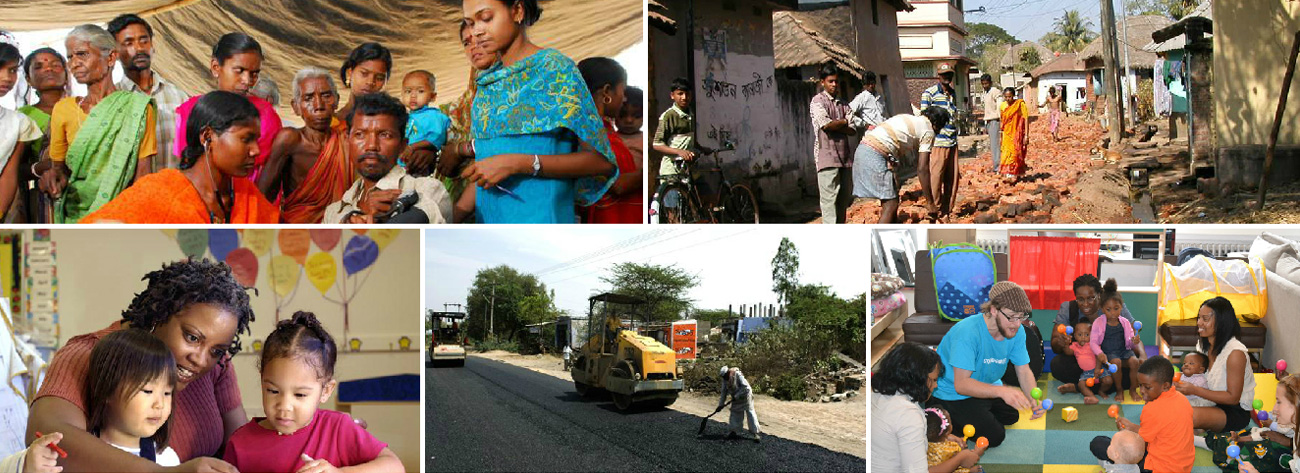• During the past 20 years the share of the developing world’s populationwith access to improved sanitation facilities and water sources hasrisen substantially. East Asia and Pacific has made above-averageprogress on improving both and narrowing the gap between them,driven by a rapid expansion in access to improved sanitation from30 percent in 1990 to 66 percent in 2010.
• Europe and Central Asia has the lowest prevalence (1.5 percent) of under-weight children among developing regions, but there is substantial variation across countries..
• • Trends in developing countries over the past two decades suggest that many countries have become less unequal, but trends differ by region andby income. Inequality in Latin America and the Caribbean fell notably in almost all upper middle-income countries but remains among the highest worldwide. The Gini coefficient is higher than the Latin America and the Caribbean average in only two other upper middle-income countries and in only a few low- and lower middle-income countries.
• More than 70 percent of girls in the Middle East and North Africa attend secondary school (higher than most developing countries), but labor force participation rates have stagnated at around 20 percent since 1990 (lower than most developing countries). Eight of the ten countries with the largest gap between their labor force participation rate and secondary enrollment ratio are in the Middle East and North Africa.
• The ratio of girls’ to boys’ under-five mortality rate varies across developing countries, but on average it is 0.96. East Asia and Pacific has the largest variation among developing regions.
• The service sector contributed substantially to gross domestic product(GDP) growth in many East Asia and Pacific economies in recent years, constituting nearly half of GDP and contributing 3.7 percentage pointsto an overall growth rate of 8.5 percent. Reflecting strong domestic demand, continuing growth of services is consistent with long-term trends of rising incomes in other regions. But despite recent growth, the service sector in many East Asia and Pacific economies is smaller than expected based on average income.
• GDP growth in Latin America and the Caribbean fell 1.7 percentage points from 2011 to 3.0 percent in 2012, the second largest drop among developing country regions after Europe and Central Asia, where growth fell 2.8 percentage points.
• Macroeconomic fundamentals weakened in most Middle East and North Africa countries in 2011 and 2012, as growth slowed and governments responded to social pressures with expansionary fiscal policies. High oil prices heightened current account and fiscal deficits in oil importers, especially in places where governments subsidize energy use.
• After the 2008 fiscal crisis, worldwide container shipments fell to472 million in 2009, an almost 9 percent drop from 2008, affecting all ports, operators, and countries. But shipments rebounded in2010, growing 15 percent and reaching pre-crisis levels. Most of the growth came from intercontinental shipments by developing countries.



